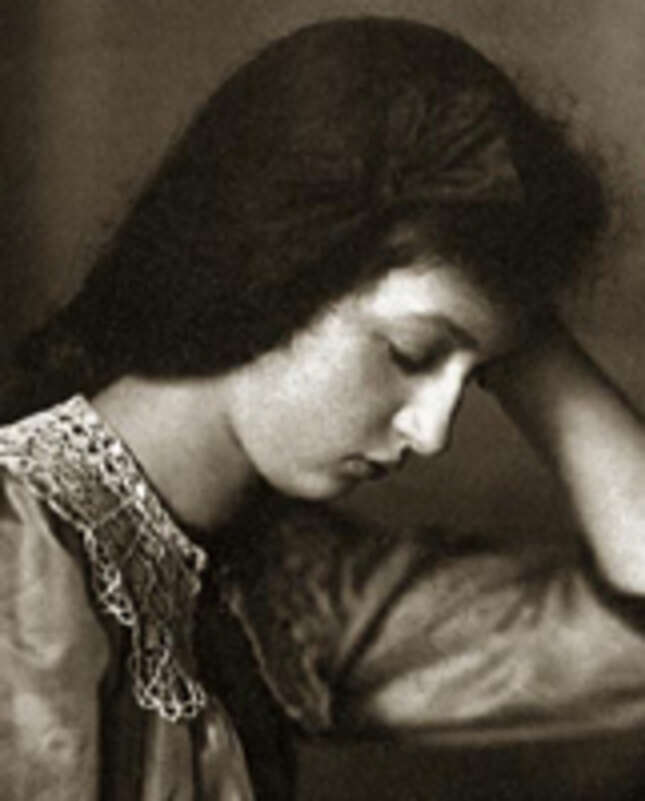
Ihre Suchergebnisse (459 gefunden)


Neuigkeit Nov 20, 2014 | Sabine Wiedemann News Eight audite productions nominated for ICMA 2015
We are particularly happy about these nominations since they document the knowledgeable appreciation of our productions through the jury members!
The winners will be announced on January 20th 2015. The Gala Concert and Award Ceremony will be hosted by the the Bilkent Symphony Orchestra in Ankara, Turkey. The Gala Concert on March 28 will feature prominent ICMA winners together with the Bilkent Symphony Orchestra.
The following audite productions were nominated:
1) Category Chamber Music:
Ludwig van Beethoven: Complete String Quartets - Vol. 2
Quartetto di Cremona
Piano Trios by Rachmaninov (Trio élégiaque, No. 1) & Tchaikovsky (Op. 50)
Trio Testore
2) Category Baroque vocal:
Fortuna Scherzosa
Ina Siedlaczek, Hamburger Ratsmusik
3) Category Historical Recordings:
Rafael Kubelik conducts Bartók: Bluebeard's Castle
LUCERNE FESTIVAL Historic Performances, Vol. IV
Dietrich Fischer-Dieskau, Irmgard Seefried
Schweizerisches Festspielorchester
Rafael Kubelík
Wilhelm Furtwängler conducts Beethoven's Symphony No. 9
LUCERNE FESTIVAL Historic Performances, Vol. VI
Elisabeth Schwarzkopf, Elisa Cavelti, Ernst Haefliger, Otto Edelmann
Philharmonia Orchestra, Luzerner Festwochenchor
Wilhelm Furtwängler
Pilar Lorengar: A portrait in live and studio recordings from 1959-1962
Pilar Lorengar, Siegfried Behrend, Hertha Klust, Richard Klemm
Berliner Philharmoniker, RIAS-Orchester, RIAS Kammerchor, Radio-Symphonie-Orchester Berlin
Ferdinand Liva, Fried Walter, Arthur Rother
The RIAS Amadeus Quartet Recordings, Vol. II: Schubert
Amadeus Quartet
The RIAS Amadeus Quartet Recordings, Vol. III: Mozart
Amadeus Quartet
Cecil Aronowitz, Heinrich Geuser
More information about the ICMA can be found here.

Rezension American Record Guide 01/2001 | John P. Mckelvey | January 1, 2001 Clifford Curzon was a finicky perfectionist who never liked the recording...
Curzon recorded expressive and powerful accounts of these two concertos with Knappertsbusch and the VPO in the mid-1950s. They are scheduled to be released soon on a low-cost Decca CD. Why, then, do we need these items from Audite?
Well, simply because these 1977 performances are even more poetic, grandly shaped, spontaneous, luminous, splendidly proportioned, and totally effective than the earlier ones. What is more, Kubelik and his great orchestra supply as sensitive and romantically supportive an orchestral backing as one could imagine--a framework for Curzon\'s pianism even more elegant than the formidable Knappertsbusch manages. Also, the sound here, though exhibiting less warmth and resonance than one expects from the Herculessaal, is more spacious, better focussed, and precisely imaged than in the earlier issue. Curzon is more expansive, and his sensitive and poetic shaping of phrases and paragraphs puts this release right into the top drawer. This is most impressive in No. 4, a work that is clearly structured on a Mozartean model. The Emperor is a little more straightforward, though still grandly proportioned and nobly expressed. Curzon\'s runs and trills are often slightly uneven, intentionally so I think, to give each of them i ts unique and individual profile. The uniquely poetic quality of these readings really puts them in a class by themselves. This is a full-price release, and it is worth far more than the asking price. It demonstrates this artist\'s work at its best.

Rezension American Record Guide September 2014 | Ralph V Lucano | September 1, 2014 Fischer-Dieskau seemed to like the role of Bluebeard. He made two studio...
She can, perhaps, seem too outgoing a singer, but next to Fischer-Dieskau she’s a model of restraint. His role does not lie in a comfortable part of his voice. In particular, it needs a depth and resonance he doesn’t have—his first few lines already take him below the point where he can produce singing tone. After the fifth door opens, you want his voice to expand confidently, but instead he tends to bark and shout rather than muster the needed fullness. He’s interesting to listen to, and when he doesn’t have to strain for volume, he can be direct and communicative, but he’s still wrong.
Kubelik draws spirited playing out of the Swiss Festival Orchestra, and the monaural sound is good—deep and undistorted; all the drama and color in the score come across.
No texts are supplied. As usual nowadays, Audite directs you to their website; but the German libretto given does not match the words we actually hear, though it’s close enough to follow. Worth having for Seefried’s sake. If you insist on a Fischer-Dieskau Bluebeard, go with the Hungarian one.

Rezension www.musicweb-international.com September 2014 | Brian Wilson | September 1, 2014 There’s no special price for the Audite recording but, at $12.02 – just over...
The Audite recording is good throughout, though I miss those powerful drum thwacks, so apparent on the Linn recording. If you bought the first volume (Audite 97.677, Symphony No. 1 and No. 4, original version, and Overture, Scherzo and Finale) I’m sure you’ll want the second. The third volume, containing the Cello Concerto and final version of the Fourth Symphony, is due for release in October 2014.
I should add that I haven’t yet heard the new, highly-regarded BPO/Simon Rattle set – review – except for the 1-minute segments from Qobuz, but I see that he attributes his appreciation of Schumann to a meeting long ago with Heinz Holliger, whom he describes as a Schumann ‘nut’ – endorsement of a kind for his mentor’s new recording.

Rezension www.musicweb-international.com September 2014 | Brian Wilson | September 1, 2014 There’s no special price for the Audite recording but, at $12.02 – just over...
The Audite recording is good throughout, though I miss those powerful drum thwacks, so apparent on the Linn recording. If you bought the first volume (Audite 97.677, Symphony No. 1 and No. 4, original version, and Overture, Scherzo and Finale) I’m sure you’ll want the second. The third volume, containing the Cello Concerto and final version of the Fourth Symphony, is due for release in October 2014.
I should add that I haven’t yet heard the new, highly-regarded BPO/Simon Rattle set – review – except for the 1-minute segments from Qobuz, but I see that he attributes his appreciation of Schumann to a meeting long ago with Heinz Holliger, whom he describes as a Schumann ‘nut’ – endorsement of a kind for his mentor’s new recording.

Rezension www.musicweb-international.com September 2014 | Brian Wilson | September 1, 2014 There’s no special price for the Audite recording but, at $12.02 – just over...
The Audite recording is good throughout, though I miss those powerful drum thwacks, so apparent on the Linn recording. If you bought the first volume (Audite 97.677, Symphony No. 1 and No. 4, original version, and Overture, Scherzo and Finale) I’m sure you’ll want the second. The third volume, containing the Cello Concerto and final version of the Fourth Symphony, is due for release in October 2014.
I should add that I haven’t yet heard the new, highly-regarded BPO/Simon Rattle set – review – except for the 1-minute segments from Qobuz, but I see that he attributes his appreciation of Schumann to a meeting long ago with Heinz Holliger, whom he describes as a Schumann ‘nut’ – endorsement of a kind for his mentor’s new recording.

Rezension Diapason N° 549 - Juillet-Août 2007 | Rémy Louis | July 1, 2007 Ce CD inaugure une édition Karl Böhm élaborée à partir d'archives toutes...
Pour beaucoup, la découverte sera un Oiseau de feu absolument original (Böhm a plus joué Stravinsky qu'on le pense en général : première bavaroise du Chant du Rossignol, Munich 1923, première allemande de Jeu de cartes, Dresde 1937, Oedipus Rex avec Jean Cocteau en récitant, Vienne 1952...). En s'ingéniant à vouloir faire tout entendre, à détailler les timbres, les couleurs, à demander à l'orchestre un jeu espressivo (hautbois, flûte, le cor au début du finale), le chef autrichien ouvre la porte d'une étrange et mystérieuse version stravinskienne de la Klangfarbenmélodie. Le temps paraît suspendu, et le monde sonore très présent qui naît peu à peu, perpétuellement mouvant, évoque au passage d'autres ambiances fin (et début) de siècle : la Danse des princesses suggère que Böhm aurait fait un très beau Prélude à l'après midi d'un faune ! Est-ce là une vision décadente ? Sans annoncer la violence rythmique du Sacre du Printemps pourtant proche, elle ne se limite pas non plus à un simple souvenir rimskien, fut-il assombri. D'évidence, cette lecture intrigante est à recommander à ceux qui connaissent bien leur Oiseau de feu.
Précisons, contrairement aux dires de l'éditeur, qu'il existait déjà dans la discographie du chef : avec Berlin à Salzbourg (1968, plus noire encore, mais son médiocre, Memories), et à Tokyo avec Vienne (1975, deux captations différentes à quelques jours d'intervalles, son glorieux, DG Japon). La parenté du propos esthétique est frappante, mais les témoignages viennois sont à part : l'or liquide de la sonorité, sa lumière, sont indescriptibles... et déclenchent une ovation colossale du public japonais.

Rezension International Record Review September 2014 | Nigel Simeone | September 1, 2014 It should be obvious from the list of selected comparisons that Bluebeard's...
So where does this newcomer – in fact more than half a century old – fit into the scheme of things? Recorded live at the Lucerne Festival in 1962, it's sung in German, which may put some people off, but honestly doesn't worry me when the singing has such conviction. Second, it has the benefit of Rafael Kubelik's conducting. Devotees of this piece may know his live recording made in 1981 with the New York Philharmonic with Tatiana Troyanos and Sigmund Nimsgern (it was included in a box of broadcast performances issued by the orchestra). He's a wonderful conductor of this work: never overdoing the drama, but underlining the turning points with the utmost sensitivity and an acute ear for telling details – and his sense of dramatic timing and pacing is unerring.
Then there's the singing: Dietrich Fischer-Dieskau is on magnificent form, bringing a kind of world-weary resignation to Bluebeard's ever more chilling revelations, and doing so in resonant voice. There's no barking or hectoring, but some very clear diction and complete involvement in the role. lrmgard Seefried is rather an unexpected choice of Judith. A stunning Mozart and Strauss singer, she’s not always comfortable in this role – and, be warned, her top C is a sort of strangled shriek. And yet, the sense that she is in a situation from which there can be no escape is tangible, and terrifying. Her singing near the end has devastating poignancy. Incidentally, the spoken prologue is omitted.
The Swiss Festival Orchestra plays admirably and the broadcast sound is acceptable – it has been very carefully restored by audite for this release. The notes include an interesting essay on the performance, but the absence of a libretto is to be regretted. What matters more than the language or the slightly boxy sound is the tangible intensity of this Bluebeard's Castle, and that makes it a version that really has to be heard.

Ensemble piano Clara Haskil
Clara Haskil (7 January 1895 - 7 December 1960) was a Jewish Romanian classical pianist, renowned as an interpreter of the classical and early romantic repertoire.
Haskil was particularly noted for her performances and recordings of Mozart. Many considered her the foremost interpreter of Mozart in her time. She was also noted as a superb interpreter of Beethoven, Schumann, and Scarlatti.
Haskil was born into a Sephardic Jewish family in Bucharest, Romania and studied in Vienna under Richard Robert (whose memorable pupils also included Rudolf Serkin and George Szell) and briefly with Ferruccio Busoni. She later moved to Paris, where she started studying with Gabriel Fauré's pupil Joseph Morpain, whom she always credited as one of her greatest influences. The same year she entered the Paris Conservatoire, officially to study with Alfred Cortot although most of her instruction came from Lazare Lévy and Mme Giraud-Letarse, and graduated at age 15 with a Premier Prix. She also graduated with a Premier Prix in violin. Upon graduating, Haskil began to tour Europe, though her career was cut short by one of the numerous physical ailments she suffered throughout her life. In 1913 she was fitted with a plaster cast in an attempt to halt the progression of scoliosis. Frequent illnesses, combined with extreme stage fright that appeared in 1920, kept her from critical or financial success. Most of her life was spent in abject poverty. It was not until after World War II, during a series of concerts in the Netherlands in 1949, that she began to win acclaim.
As a pianist, her playing was marked by a purity of tone and phrasing that may have come from her skill as a violinist. Transparency and sensitive inspiration were other hallmarks of her style.
Well regarded as a chamber musician, Haskil collaborated with such famed musicians as George Enescu, Eugène Ysaÿe, Pablo Casals, Joseph Szigeti, Géza Anda, Isaac Stern and Arthur Grumiaux, with whom she played her last concert. While renowned primarily as a violinist, Grumiaux was also a fine pianist, and he and Haskil would sometimes swap instruments.
She played as a soloist under the baton of such conductors as Ansermet, Barbirolli, Beecham, Boult, Celibidache, Cluytens, Fricsay, Giulini, Inghelbrecht, Jochum, Karajan, Kempe, Klemperer, Kubelik, Markevitch, Monteux, Münch, Paray, Rosbaud, Sawallisch, Solti, Stokowski, Szell, among many others.
Haskil died from injuries received through a fall at a Brussels train station. She was to play a concert with Arthur Grumiaux the following day.
An esteemed friend of Haskil, Charles Chaplin, described her talent by saying "In my lifetime I have met three geniuses; Professor Einstein, Winston Churchill, and Clara Haskil. I am not a trained musician but I can only say that her touch was exquisite, her expression wonderful, and her technique extraordinary." (Swiss Radio interview, 19 April 1961.)